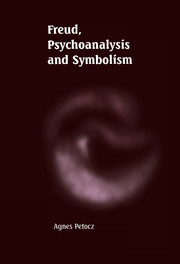Introduction
Published online by Cambridge University Press: 22 October 2009
Summary
In the Western philosophical tradition, the human being has been characterised variously as animal politicum, and as animal rationale. Fifty years ago, Cassirer (1944) proposed another characterisation: animal symbolicum. Just as we humans are community-living creatures, and just as we are creatures endowed with the ability to reason, so, too – and this has long been acknowledged – we are symbol-producing, symbolusing and, often, symbol-dominated beings; the creation and use of symbols is central and distinctive in our behaviour and in our mental life.
Human behaviour and mental life being the specific concerns of psychology, it would seem reasonable to look to that discipline for an account of symbolism. But mainstream psychology has disappointingly little to say about the subject. As Bertalanffy (1981) observes, ‘In spite of the fact that symbolic activity is one of the most fundamental manifestations of the human mind, scientific psychology has in no way given the problem the attention it deserves’ (p. 42). In contrast, outside mainstream psychology there is no shortage of material on symbolism. Leaving aside psychoanalysis (for the moment), the humanist, phenomenological and existentialist movements, on the periphery of mainstream psychology because of their opposition to science, devote considerable attention to symbolism, and their contributions are joined by an even more extensive body of literature which spans the whole range of the social sciences:
- Type
- Chapter
- Information
- Freud, Psychoanalysis and Symbolism , pp. 1 - 6Publisher: Cambridge University PressPrint publication year: 1999



